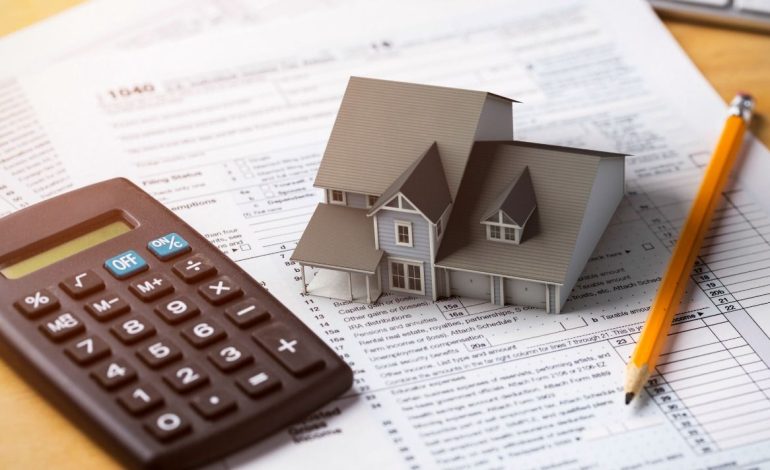Council Tax is an annual fee your local council charges you for the services it provides, like rubbish collection and libraries. Normally you pay it in ten monthly installments, followed by two months of not making any payments.
How much Council Tax you pay depends on:
- your personal circumstances
- which valuation band your property is in
- how much the council needs to fund its services.
Local services are funded by Council Tax. This includes:
- police and fire services
- leisure and recreation projects, such as maintaining parks and sports centers
- libraries and education services
- rubbish and waste collection and disposal
- transport and highway services, including street lighting and cleaning, and road maintenance
- environmental health and trading standards
- administration and record-keeping, such as marriages, deaths and birth, and local elections.
Council Tax isn’t used to pay for health services.
How Much is my Council Tax?
The amount of Council Tax you pay depends on the value of your home and where you live. Find your local council and how much you need to pay:
- England – GOV.UK
- Scotland – Scottish Local Government
- Wales – Welsh Local Government
Each of the links above will get you to your local council’s website. From there, you can find information on Council Tax. You might also be able to contact them directly and ask.
You might be able to get a reduction on your Council Tax if you’re:
- On a low income.
- A student or you live with students.
- Live alone or are the only adult in your home.
- Get certain benefits, such as Jobseekers Allowance, Income Support, Pension Credit, Employment and Support Allowance and Universal Credit.
- Or someone you live with has a disability and as a result needs to live in a larger home.
- Severely mentally impaired or living with someone who is.
- A care leaver in Scotland, where you’ll be exempt from Council Tax between the ages of 18 until you turn 26.
- Live in certain counties in England and Wales and are a care leaver.
- A member of the armed forces, depending on your circumstances.
- Moved into a care home or hospital.
- In prison – unless you’re serving a prison sentence for failing to pay Council Tax.
Most councils allow you to choose to spread your Council Tax payments over 12 months instead of the usual ten. Just ask your council if they offer this option. Making the same payment every month might make it easier for you to budget.
If you pay in 10 instalments you won’t pay any in February and March.
How to Pay Your Council Tax
You can pay your council tax by Direct Debit, by phone, by post, online or in person.
Set up or change a Direct Debit
Council tax is usually calculated for a full year, starting in April and ending in March. When you pay by Direct Debit it is split into monthly payments.
You can choose:
- to split it into 10 monthly payments (April to January) or 12 monthly payments (April to March)
- to make your payments on the 10th, 20th or last day of each month
Use our online form to choose your payment preferences and add or change your bank details.
You will need:
- your council tax account number (you can find this on your bill)
- your bank account number and sort code
- the names on the bank account
Please do not complete the direct debit form if you do not live at the address. If you have moved and have not yet received a council tax bill, you will need to tell us about your change of address before setting up the Direct Debit.
Card payments
You’ll need your council tax account number. You can find your account number on your bill. Payments made before 5pm will show on your council tax account on the next working day. Payments made after 5pm will show two working days after.
Pay by phone
Pay using this 24 hour automated payment line:
0300 456 0484
Online banking, telephone banking and standing orders
Your council tax account number should be used as the reference number. Your account number can be found on your bill.
Name of organization: Leeds City Council
Bank and branch name: National Westminster Bank, 8 Park Row, Leeds LS1 1QS
Branch address: Head Office Collection
Account number: 00000000
Sort code: 57-12-72
In-person
You’ll need a copy of your council tax bill. Take your bill to pay at a:
- Post Office branch finder – pay by cash, debit card or cheque
- PayPoint outlet branch finder – pay by cash
Post
Make cheques payable to Leeds City Council. Your council tax account number should be used as the reference number. Your account number can be found on your bill.
Read Also: Income Taxation in Canada
Write your account number on the back of the cheque and post it to:
Leeds City Council
P.O. Box 60
Leeds
LS2 8JR
Do Foreigners Pay Tax in the UK?
Your UK residence status affects whether you need to pay tax in the UK on your foreign income.
Non-residents only pay tax on their UK income – they do not pay UK tax on their foreign income.
Residents normally pay UK tax on all their income, whether it’s from the UK or abroad. But there are special rules for UK residents whose permanent home (‘domicile’) is abroad.
Work out your residence status
Whether you’re UK resident usually depends on how many days you spend in the UK in the tax year (6 April to 5 April the following year).
You’ll only be resident in the UK if both of the following apply:
- you meet one or more of the automatic UK tests or the sufficient ties test
- you do not meet any of the automatic overseas tests
Otherwise, you’ll be non-resident in the UK for tax purposes.
- UK tests
You may be resident under the automatic UK tests if:
- you spent 183 or more days in the UK in the tax year
- your only home was in the UK for 91 days or more in a row – and you visited or stayed in it for at least 30 days of the tax year
- you worked full-time in the UK for any period of 365 days and at least one day of that period was in the tax year you’re checking
You may also be resident under the sufficient ties test if you spent a number of days in the UK and you have additional ties to the UK, like work or family.
- Overseas tests
You’re usually non-resident if either:
- you spent fewer than 16 days in the UK (or 46 days if you have not been a UK resident for the 3 previous tax years)
- you worked abroad full-time (averaging at least 35 hours a week), and spent fewer than 91 days in the UK, of which no more than 30 were spent working
If you’re still unsure about your status, you can use the residence status checker. This will give you an indication of whether you were a UK resident in any tax year from 6 April 2016.
You may be asked for the following information about the year you’re checking:
- how many days you spent living and working in the UK and abroad
- roughly how many hours a week you worked
- family you have in the UK
- details of your home in the UK
Your residence status when you move
When you move in or out of the UK, the tax year is usually split into 2 – a non-resident part and a resident part. This means you only pay UK tax on foreign income based on the time you were living here.
This is called ‘split-year treatment’.
You will not get split-year treatment if you live abroad for less than a full tax year before returning to the UK. You also need to meet other conditions.
To find out if you qualify and see which split-year treatment ‘case’ you’ll need to mention on your Self Assessment tax return, you can:
- read HMRC’s guidance about split-years under the Statutory Residence Test
- contact HMRC
If your situation changes
Your status can change from one tax year to the next. Check your status if your situation changes, for example:
- you spend more or less time in the UK
- you buy or sell a home in the UK
- you change your job
- your family moves in or out of the UK, or you get married, separate or have children
Residence and capital gains
You work out your residence status for capital gains (for example, when you sell shares or a second home) the same way as you do for income.
UK residents have to pay tax on their UK and foreign gains. Non-residents have to pay tax on income, but usually only pay Capital Gains Tax either:
- on UK property or land
- if they return to the UK
Income Tax rates and Personal Allowances
How much Income Tax you pay in each tax year depends on:
- how much of your income is above your Personal Allowance
- how much of your income falls within each tax band
Some income is tax-free.
The current tax year is from 6 April 2023 to 5 April 2024.
Your tax-free Personal Allowance
The standard Personal Allowance is £12,570, which is the amount of income you do not have to pay tax on.
Your Personal Allowance may be bigger if you claim Marriage Allowance or Blind Person’s Allowance. It’s smaller if your income is over £100,000.
Income Tax rates and bands
The table shows the tax rates you pay in each band if you have a standard Personal Allowance of £12,570.
| Band | Taxable income | Tax rate |
|---|---|---|
| Personal Allowance | Up to £12,570 | 0% |
| Basic rate | £12,571 to £50,270 | 20% |
| Higher rate | £50,271 to £125,140 | 40% |
| Additional rate | over £125,140 | 45% |
You can also see the rates and bands without the Personal Allowance. You do not get a Personal Allowance on taxable income over £125,140.
If you’re employed or get a pension
Check your Income Tax to see:
- your Personal Allowance and tax code
- how much tax you’ve paid in the current tax year
- how much you’re likely to pay for the rest of the year
Other allowances
You have tax-free allowances for:
- savings interest
- dividend income, if you own shares in a company
You may also have tax-free allowances for:
- your first £1,000 of income from self-employment – this is your ‘trading allowance’
- your first £1,000 of income from property you rent (unless you’re using the Rent a Room Scheme)
Find out whether you’re eligible for the trading and property allowances.
You pay tax on any interest, dividends or income over your allowances.
Paying less Income Tax
You may be able to claim Income Tax reliefs if you’re eligible for them.
If you’re married or in a civil partnership
You may be able to claim Marriage Allowance to reduce your partner’s tax if your income is less than the standard Personal Allowance.
If you do not claim Marriage Allowance and you or your partner were born before 6 April 1935, you may be able to claim Married Couple’s Allowance.


